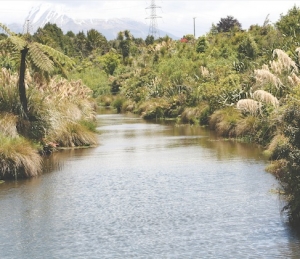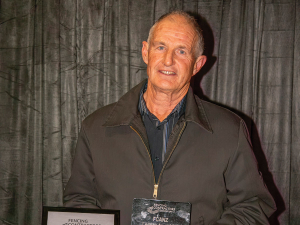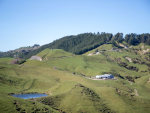The by two Norwegians, researcher Geir Sogn-Grundvag and oilman, Oddvar Vermedal.
Here we go, I thought, until I read the photo caption. It featured Fish & Game contributor Graeme Marshall fishing the “crystal clear” Opihi River. I know Federated Farmers South Canterbury rates Marshall quite highly. So was it just a file photo? If so, whoever chose it unwittingly destroyed the arguments of Messrs Sogn-Grundvag and Vermedal.
If a picture is worth a thousand words its caption is worth twice that. The “crystal clear” Opihi River flows year-round only because of water released from the Opuha water storage dam.
I know only a little about fly fishing, chiefly that one basic need of trout is water – water that’s only consistently flowed down the Opihi since the late 1990s.
The old Opihi River occasionally dried up in the Canterbury heat, but thanks to the Opuha dam the river now has permanent water flow. Everyone, anglers included, must agree that water is a good thing for fish.
So who built the Opuha Dam and why? It was mostly dairy farmers, to drought-proof large swathes of South Canterbury farmland.
Knowing this, we can summarise this story as showing an angler only being able to do what he loves doing due to far-sighted dairy farmers who built the dam. Yet somehow they’re the bad guys for providing that water. Talk about mixed messages.
The Opuha also supplies town water, generates electricity and provides recreation. What’s not to like?
One economic study done on Opuha confirms it has irrigated plenty of jobs too. It showed that for every dollar generated on-farm from water storage $8.30 in economic benefits flowed into the wider economy.
No wonder our drystock colleagues are so keen on Ruataniwha in Hawke’s Bay, which would also increase the summer flow of the Tukituki River?
Right now, the Agrifax beef price index has hit record highs, smashing a level last reached when Apple’s iPhone first officially appeared in New Zealand. The US Department of Agriculture believes it could be 2017 before American beef production starts to grow again.
Irrigation is not just for dairy farming. Our sheep colleagues are enjoying an excellent run too and how much better if they could eliminate the biggest business risk they face – summer dry and drought.
At this point I re-read Messrs Grundvag and Vermedal’s article. Grundvag, it seems, is a regular writer on trout fishing here: he wrote an impressive piece that appeared last year in New Zealand Troutfisher.
There also seem to be political points being scored by two people who manage to write as one.
The references to rivers drying up due to farming would ‘hold water’ if Environment Canterbury had made that assertion. Rivers are subject to minimum flows and irrigation stops to protect ecological values when that minimum is reached. The Opihi has the potential to dry up naturally in summer unless there’s a water storage dam feeding it.
Is the scientific evidence unequivocal about dairying? The excellent lawa.org.nz states that our freshwater quality has been largely stable for the past decade. One of our guys in Waikato, Stuart King, also hit back at pollution claims by drinking water straight from the Waihou River in front of media.
Even the OECD has reportedly found that of all major rivers flowing through farmland in member countries, the Clutha was best in the world, the Waitaki second and the Waikato fourth. Given stock exclusion, we know that E.coli levels are low except in urban waterways, where of course, there aren’t many cows or sheep.
But the clincher for me is that the authors didn’t say they were never coming back.
• Andrew Hoggard is Federated Farmers Dairy chairperson.

















